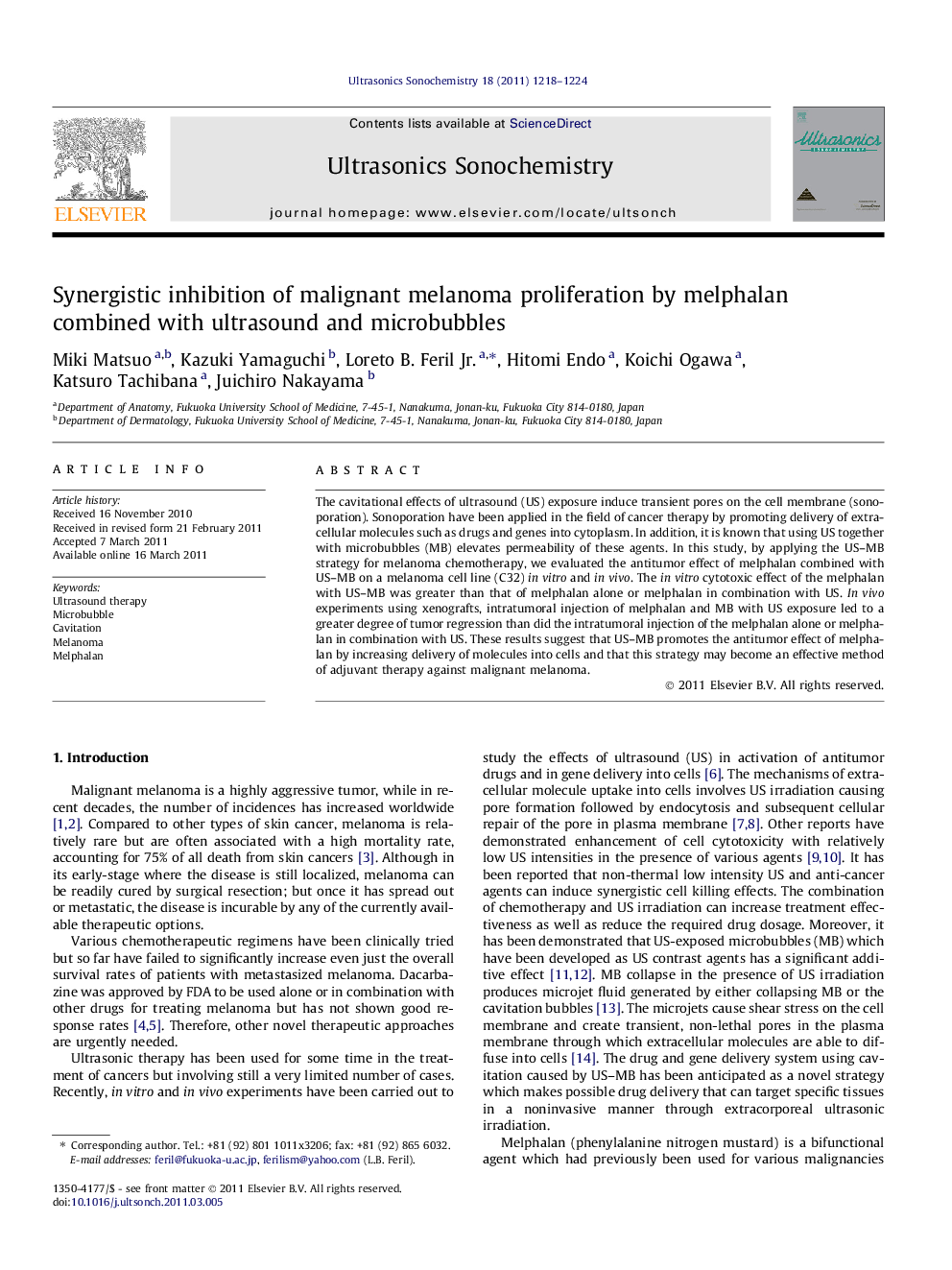| Article ID | Journal | Published Year | Pages | File Type |
|---|---|---|---|---|
| 1267012 | Ultrasonics Sonochemistry | 2011 | 7 Pages |
The cavitational effects of ultrasound (US) exposure induce transient pores on the cell membrane (sonoporation). Sonoporation have been applied in the field of cancer therapy by promoting delivery of extracellular molecules such as drugs and genes into cytoplasm. In addition, it is known that using US together with microbubbles (MB) elevates permeability of these agents. In this study, by applying the US–MB strategy for melanoma chemotherapy, we evaluated the antitumor effect of melphalan combined with US–MB on a melanoma cell line (C32) in vitro and in vivo. The in vitro cytotoxic effect of the melphalan with US–MB was greater than that of melphalan alone or melphalan in combination with US. In vivo experiments using xenografts, intratumoral injection of melphalan and MB with US exposure led to a greater degree of tumor regression than did the intratumoral injection of the melphalan alone or melphalan in combination with US. These results suggest that US–MB promotes the antitumor effect of melphalan by increasing delivery of molecules into cells and that this strategy may become an effective method of adjuvant therapy against malignant melanoma.
► Ultrasound irradiation of microbubbles enhances the cytotoxic effects of melphalan against malignant melanoma cells in vitro. ► Ultrasound irradiation of microbubbles in melanoma tumors inhibited the tumor growth. ► Ultrasound irradiation of microbubbles and low-dose melphalan synergetically inhibited malignant melanoma tumor growth in vivo.
